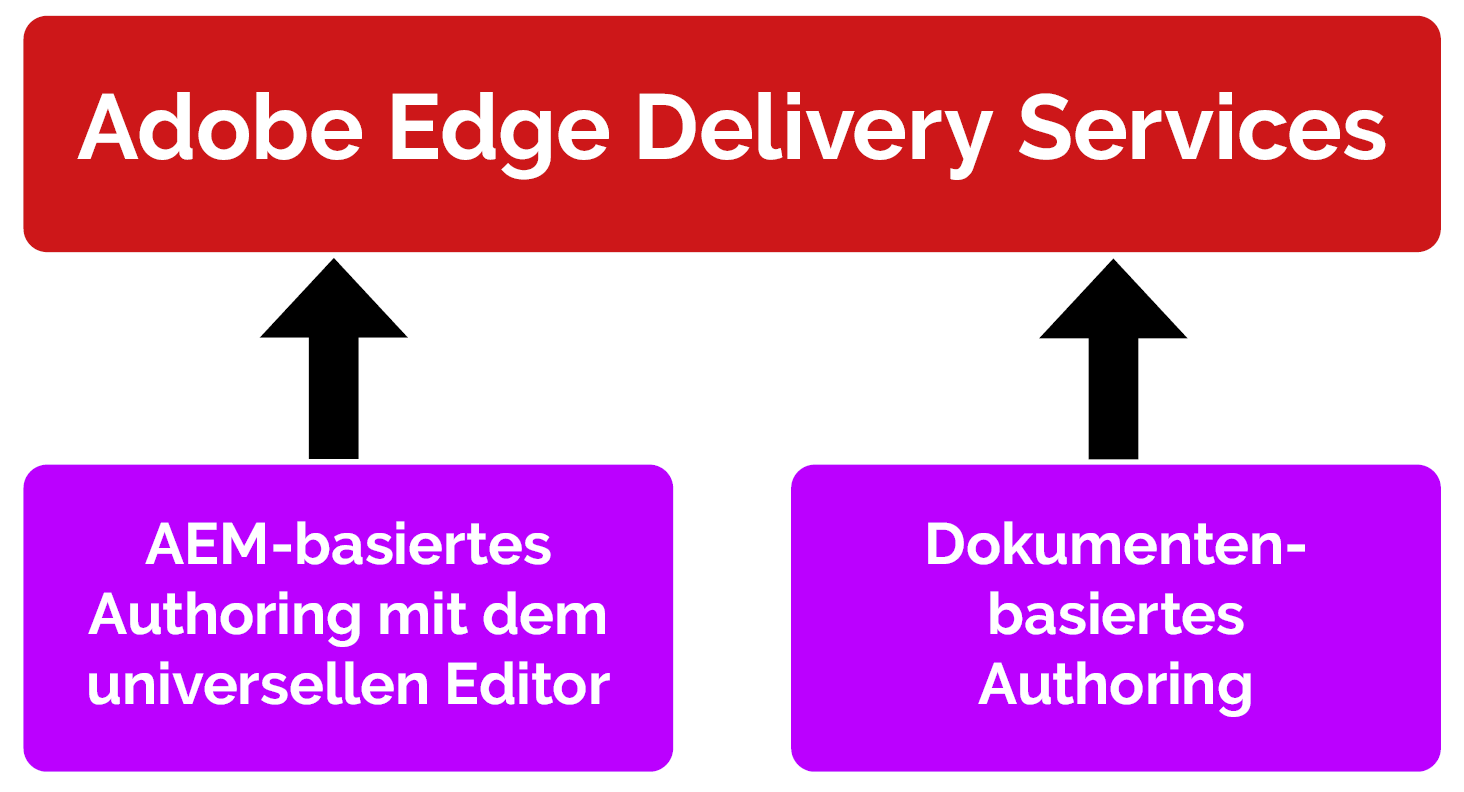Flexibility through decoupling of content sources
The Edge Delivery Services (EDS) are part of the current Adobe Experience Manager (AEM) as a Cloud Service. EDS is a combination of different services that communicate with each other (microservices).
The EDS allow great flexibility in the creation of content on your website, as the Edge Delivery Services are decoupled from the content source and can include content from different content sources. This decoupling of content sources increases authoring efficiency, as authors can use AEM content management and AEM-based authoring with the universal editor as well as document-based authoring by default. This means that you can work seamlessly with multiple independent content sources on the same website.
Efficiency through document-based authoring
Among other things, EDS provides a development environment with which authors can quickly create, update and publish website content in a completely new way using document-based authoring. Document-based authoring makes the management of websites accessible to a wider range of authors than was previously the case, as content can be edited and published directly in familiar applications such as Microsoft Word or Google Docs. This means that documents from these applications become website content. Headings, lists, images and text elements are transferred directly. The newly created content can then be added to the website immediately without the need for a new creation process.
Maximum performance and top position in the ranking
Another key focus of EDS is the automated optimisation of website performance and the significant improvement of SEO rankings. Pre-optimised JavaScript code and continuous code validation automatically create sites with a perfect Lighthouse score or ideal Core Web Vitals metrics.
Edge Delivery Services therefore ensure the fastest possible loading times, the best SEO ranking positions and, above all, a pleasant user experience. The corresponding website performance and visitor interactions can be continuously monitored in AEM using Real User Monitoring (RUM).
Key components of Adobe Edge Delivery Services
Document-based authoring
Document-based authoring allows website content to be managed directly in widely used and readily available standard applications such as Microsoft Word or Google Docs, which significantly simplifies and speeds up the creation, editing and approval of content across teams.
Efficient development
Content creation is strictly separated from the management of the website's functionality. This allows authors to focus entirely on generating content without any training time, while developers benefit from code that has already been optimised by the system and predefined page elements. This makes it possible to work very efficiently and cost-effectively.
Performance optimization
By automatically optimising website performance, the EDS enable the fastest possible loading times and a perfect Lighthouse score, or ideal Core Web Vitals results.
Ranking optimization
The system-side optimization of performance significantly improves the SEO ranking and also has a positive effect on engagement and conversion - without the use of potentially costly SEO experts.
Advantages of Adobe Edge Delivery Services
With its document-based authoring approach, Adobe makes its customers’ content management more efficient, optimizes the content supply chain and helps to meet the rapidly growing demand for content on multiple channels. In addition, the performance and ranking of websites are significantly improved.
Our services
We offer you the following services for your successful introduction of Adobe Edge Delivery Services:
Strategy & Roadmap
Analyse der bestehenden Content Creation Prozesse und des Stands der verfügbaren Technik. Bedarfsanalyse und gemeinsame Abstimmung der Zieldefinitionen.
Konfiguration
Konfiguration der Edge Delivery Services für das dokumentenbasierte Authoring je nach Bedarf und Zieldefinition, inklusive der benötigten Entwicklungsumgebung und kundenspezifischem CDN.
Entwicklung
Personalisierte Frontendentwicklung der benötigten Seiten in Absprache mit den Autoren und den Entwicklern des Kunden. Alternativ der Auf- oder Umbau von initialen Beispielseiten mit den gewünschten Seitenelementen.
Schulungen
Der jeweiligen Rolle angepassten Schulungen für Autoren (Content erstellen und publizieren) und für Entwickler (Konfiguration, Codeverwaltung, Layoutanpassungen, etc.).

